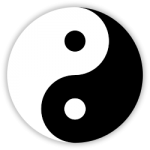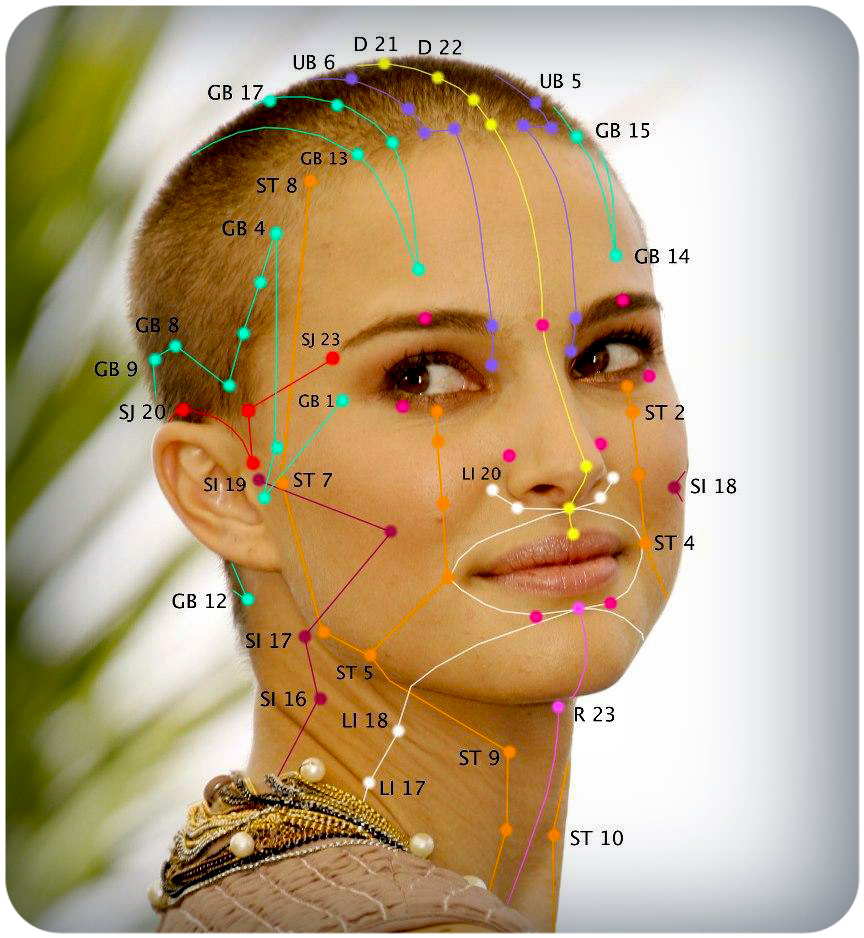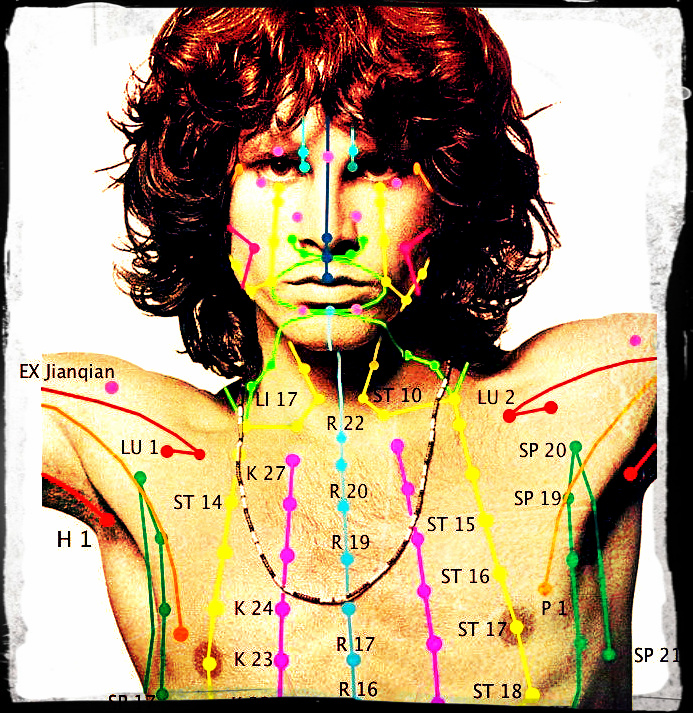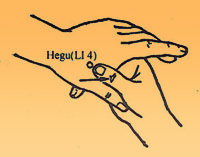Larger-than-life-sized statue depicting a Chinese immortal, bearing the symbolic peach of longevity, and constructed entirely of ginseng roots! Red and white roots give the appearance of robes, while the Sage’s skin and forehead are made of pressed ginseng cortex. The beard is formed from rootlets of white ginseng, and fingernails, too, are made from ginseng.
Wendy
JU HUA or CHRYSANTHEMUM FLOWER
Spoken of medicinally by the physician of mythical stature, Shen Nong [said to have lived in about 2,800 B.C.]. In The Canon of Materia Medica 神農本草經 it was first proclaimed that Ju Hua improved senses of vision and hearing, alertness, clarity of thinking, promoted an energetic body, and increased longevity by slowing aging. It is now wide-spread knowledge that Ju Hua pacifies the Liver therefore brightening vision, while also relieves fever and vanquishes toxins-among other attributes. [see comment box]
Jing Ming 精明 translates to mean the brightness of the eyes, but also the essence of mind & emotions that is reflected through the eyes. Oriental medicine acknowledges the relationship between tissues and organs. The clarity and brightness [Jing Ming] of the eyes is a reflection of the Liver, which imbues the capacity for observing direction [inner, and of the world] and all material things-including distinguishing black and white and examining far and near.
 Drink Chrysanthemum Tea Frequently
Drink Chrysanthemum Tea Frequently
Modern analysis shows that chrysanthemum contains choline, vitamin A, B1, glycosides, adenine, amino acids, flavonoids, and inhibits bacteria and has antivirual qualities [Staphylococcus aureus, Streptococcus hemolyticus B, Pseudomonas aeruginosa, Shigella dysenteriae, tubercle bacillus and dermatomycosis.] Ju Hua enhances capillary strength, and balances factors contributing to high blood pressure, arteriosclerosis, elevated cholesterol, palpitations, dizziness, migraines, cold & flu.
Chrysanthemum Tea Recipe
Unless the Ju Hua is a part of a decoction, it can be brewed as a simple beverage tea in the following manner:
1] Use approximately 25 grams of dried chrysanthemum flowers
2] Boil 5 cups of water in a sauce pan on the stove.
3] Add the chrysanthemums & turn OFF the burner. Simmer for about 15 minutes with a lid on the pot.
4] Strain tea removing the bits of chrysanthemum flowers
5] Add a tiny taste of honey [only if desired]
Yields 4 Servings Drink over the course of the day or share with a friend.
Cupping Treatment
Skin becomes reddened due to the congestion of blood flow where superficial muscular layers have been drawn up and held within a bulbusly-shaped cup [the cup most effectively used is made of glass]. Suction is induced by fire or by modern means of a pump device. Cupping is applied where physical pain is deeper than the tissues being suctioned. It is beneficial in treatment of chronic obstructive and accumulation conditions. Cupping treatment can be administered with the cups in stationary placement, or with oil applied to the skin before cups are moved in a gliding fashion over the musculature; referred to as ‘moving cups’.
The earliest use of cupping dates to early 3oo A.D., recorded by Taoist alchemist & herbalist, Ge Hong as ‘Fire Jar QI’ [Huo Quan QI]. Cups would also be boiled in an herbal decoction just prior to applying to the skin, accentuating effects by fusing herbs into the cupping treatment. Cupping over an acupuncture needle is a current method chosen for the treatment of arthralgia. And in certain cases, blood letting [Luo Ci ‘Vessel Pricking’] a few drops of blood with a 3-edged lancet, and then applying the cup over the site, strongly rectifies toxic heat with blood stasis.
Displays of the distinctive, temporary, circular residual marks from cupping treatment.
Acupuncture Meridians and Points 腧穴
Acupuncture Points are sites on the body where acupuncture needles are placed, tuning in to the viscera as well as energetic governances. Acupuncturists, as well as Marial Arts Practitioners as well as Tuina, Shiatsu, and other light-body-workers guide QI by using the layout off points of energy along these meridians. The ‘Cun’ is one aspect of point location used to find acupuncture points, a measurement relative to the proportions of each patient’s body. From a research stance, acupoint sites measure higher electrical charge and conductivity, as well as being concentrated neural and vascular conduits.
TCM Perspective & Treatment of Adrenal Insufficiency

Adrenal Insufficiency – Burning the Candle at Both Ends
Traditional Chinese medicine regards adrenal fatigue as insufficiency of the Kidneys. Adrenaline, the action hormone, increases the body’s yang [as evidenced by perspiration and increased heart rate]. Warm in nature, the yang nature of adrenaline is likely to consume yin. However, kidney yang deficiency, exhibited by more cold than heat, more fatigue than feeling wired, and due to inherent or eventual jing [essence] depletion, can be the crux. According to traditional Chinese medicine, the kidney essence determines the quality of life-long health; their energy can be preserved or it can be dissipated by a severe life-style that is inadequate to nourish vital Qi and will ultimately shorten life span.
The prevalent emotional factor when the kidneys are taxed is fearfulness; Qi drops in the contracting mode of self-protection. Blood circulation to the periphery is shunted. ‘Frozen with fear,’ we experience cold hands and feet. Fear and stress signal a perceived need by the body to secrete adrenaline and cortisol, leading to the break down of stored fats and proteins converted to glucose [sugar], making available energy to fight or flee from threat — thoroughly debilitating over time.
A regimen of Chinese herbs and acupuncture for the adrenals should be undertaken for a period of no less than 60 days, to possibly 120 days as a matter of course, to repair and cultivate energy rather than resorting to adrenaline for drive.
Liu Wei Di Huang Wan • A standard Chinese herbal formula to enhance adrenals.
Zhi Bai Di Huang Wan • A version of Liu Wei which quells heat from Kidney Yin depletion.
Da Bu Yin Wan • ‘The Great Supplementing Yin Pill’ -&- Jin Gui Shen Qi Wan • Warm, while buffering Yin.
You Gui Wan • A warming Kidney tonic formula.
* Acupuncture & Chinese herbal diagnosis and treatment should be tended to by a licensed Chinese medicine practitioner.
What Causes Adrenal Burn Out: Feeling stressed and anxious almost all of the time commonly due to dynamics with those whom we experience as overbearing, demands of scheduling, personal expectations, job pressures, commuting, finances, illness, compulsive athletic training, as well as inadequate nutrition, erratic eating cycles and skipping meals.
Symptoms: Listlessness, morning and late afternoon energy particularly low, performing daily tasks is exhausting, falling into deep naps whenever possible to recharge, food cravings for carbohydrates, sugar, salt and caffeine to compensate, absent-mindedness, intolerance to cold, unexplainable weight fluctuation, erratic sleep; difficulty falling or staying asleep and then waking tired, libido problems. Other non-specific symptoms may include: Allergies, general weakness and debility, headaches, thinning hair, depressive mood swings and an inability to cope with any stress. Some studies link adrenal weakness as contributing factors in fibromyalgia and hypothyroidism.
Prevention is, in large part, the treatment: Stress and other emotional strains should be entirely avoided, while also resolving or changing our reactions to them. Diet has a significant impact on creating and repairing adrenal depletion. Eating frequent, small meals is beneficial. One should also eat foods that nurture the Kidney. These include: Humanely harvested eggs, adzuki beans, black beans, barley, walnuts, flax, pumpkin and sunflower seeds, deep green leafy vegetables, blueberries, shitaki and black fungus mushrooms, root vegetables, black sesame seeds, kelp, very small amounts of sea salt or tamari, asparagus and raisins; While avoiding all sugar, alcohol, heavily salted foods, black tea, yerba maté and coffee – even decaf. Smokers should immediately stop the intake of tobacco. Chinese herbal medicine, Acupuncture and Qigong can show us the path to restoring balance to the energetics of the kidney, and therefore the adrenals, to preserve the health of both body, mind and spirit.
Health & Wellness
Best Wishes to All!

Diabetes in Traditional Chinese Medical Treatment
Diabetes Mellitus originates from deficiency of Yin and manifests externally as a syndrome of excessive heat. As the disease progresses, deficiency of Yin produces dry-heat which in turn damages QI and Yin, exhausting both Yin and Yang in time. The incidence of diabetes is projected to double in the next 10 years worldwide; yet, in 752 A.D., the distinguished physician Wang Tao published the famous book Wai Tai Mi Yao, a comprehensive medical guide which implicated the pancreas as the organ involved in this pattern of disease. Herbal treatment in the initial stage countered with herbs that had a cold nature and that nourished Yin – the same diagnosis & treatment today. In China, diabetes is not as prevalent as elsewhere. The incidence rate of diabetes in China is reported to be 0.67%, compared with about 2.2% in the U.S. 90% of the U.S. cases are insulin-independent, due to genetic factors, diet and obesity.
STAGES OF DEVELOPMENT
• Diabetes develops initially over a period of about 3 years.
• Intermediate stage (with deficiency of QI and Yin) over a period of about 5 years.
• Late stage (with deficiency of QI, Yin and Yang) develops over a period of about 8 years, with blood circulatory disorders that progress throughout.
Along with Chinese herb therapy, Acupuncture can be used to treat such risk factors as obesity, high blood pressure, high cholesterol and triglyceride levels, etc., the diabetic syndrome itself, and the secondary effects of diabetes. About 70-80% of those using acupuncture and appropriate formulations of Chinese herbs at the high Chinese-style dosages, achieve improvement, often better than the many western drugs; while 20-30% show only a marginal response. Blood sugar levels may not reach norms but can be reduced enough to ameliorate symptoms and decrease the secondary risks of long-term elevation of blood sugar.

Wellness Best Wishes to All
CELESTIAL POETRY
Ancient Chinese cosmology that has guided oriental medicine for millennia is as infinite as the stars, deep as oceans, predictable as the earthly rhythms of the seasons; deriving meaning through timeless truth.
“If we can not measure, we can not know,” is the western-mindedness that threatens to divert the true and artful understanding of ourselves as unfolding aspects of nature known by scholars & sages of this ancient medicine. As practitioners of this healing path, and in this modern world climate, we must still continuously follow and help others to recognize the Tao, and therefore, their own healing. Observing and becoming one with nature allows us to know our inner nature. “Re-thinking” & “Adapting” Chinese medicine for westerners will potentially render the core of this medicine extinct.
Treatment of Bell’s Palsy w/ Moxibustion at LI4
Historically the acupoint LI4 [Hegu] has been indicated to treat Bell’s Palsy. However, research indicates that moxibustion at LI4 benefits Bell’s Palsy patients with facial paralysis specifically affecting the lips. The application of moxibustion to LI4 benefits facial symmetry similarly as would electro-acupuncture on points around the mouth. MRI scans indicate that LI4 also intersects sensory pathways of the face and mouth to the central nervous system, and that moxa at LI4 elicits detectable changes in the brain.
REFERENCES • Neural Regen Res. 2012;7(9):680-685. Infrared thermography and meridian-effect evidence and explanation in Bell’s palsy patients treated by moxibustion at the Hegu (LI4) acupoint. Ling Guan, Gaobo Li, Yiling Yang, Xiufang Deng, Peisi Cai. • Du YH. Clinical Evidence of Acupuncture and Moxibustion Therapy. Beijing: People’s Health Publishing House. 2011. • Li CY, Wang QS, Liu Y, et al. Effects of amplitudes of facial nerve evoked potential acupuncture at hegu on peripheral facial paralysis patients. Liaoning Zhongyiyao Daxue Xuebao. 2009;11(10):140-141. • Zhang JB. Clinical analysis of the point LI4 treating diseases in the face and mouth phenomenon. Zhongguo Zhen Jiu. 1998(10): 636-637.
Intriguing Research of Acupuncture Meridians
Two French physicians have done a series of research experiments that make visible the acupuncture meridian system. Jean-Claude Darras, M.D. and Professor Pierre de Vernejoul, M.D. injected radioactive isotopes into the acupuncture points of human patients and traced isotope uptake by gamma-camera imaging. Their experiments found that the isotopes migrated 30 centimeters along the classical Chinese meridian system pathways during the course of 4 to 6 minutes. In contrast, injecting the isotopes into points at random on the body produced no such results. Further tests demonstrated that the migration was not through the vascular or lymphatic system.

![]()
Safe, Effective Treatment with Chinese Herbs
Chinese herbal medicine, a vital aspect of Chinese medicine, relies upon collecting detailed information from a patient by means of questioning, visual examination, pulse and tongue diagnosis, and some bodily palpation to derive a specified diagnosis that is unique to each patient’s expression of what may seem by the primary symptoms surrounding the illness to be one and the same. However, by the traditional methods of pattern discrimination, TCM practitioners derive the particulars of how an individual generates and bears the disorder by their underlying interconnections. This is the basis of pattern discrimination according to TCM. 
From the pattern we derive the diagnosis, treatment plan, and prognosis. A formula of medicinals in their raw form is composed, or if a prepared medicine fits the pattern, it may be used. Additional formula modifications are taken into account that continue to address current and evolving patient experience and characteristics of their disease. This is in contrast to a single herb or herbal blend prescribed by cookbook-style symptom identification. Access to information regarding herbs and sundry home remedies is routinely taken out of context leading to adverse cumulative effects or none whatsoever with regard to conditions requiring resolution. If something has the ability to facilitate healing, it can also elicit harmful changes if used inconsistently with the unique roots of the condition. This is commonplace in philosophical health goals and self-diagnosis to identify and treat health problems. An experienced, licensed acupuncturist who is also a Chinese herbal medicine practitioner, is able to offer sound guidance in deriving results using herbal allies safely and effectively for an infinite array of health conditions.













